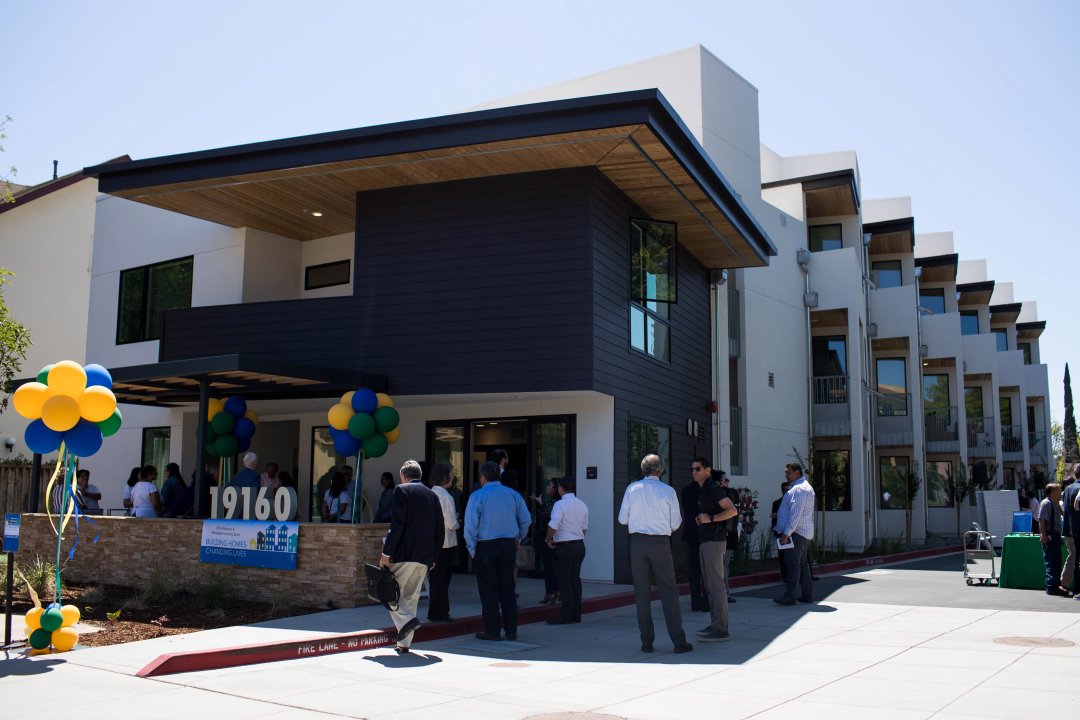Since 2015, public funding has provided permanent housing for more than 14,000 homeless people. SV@Home Executive Director Leslye Corsiglia points out that the complexity of zoning and approval processes, local opposition, and the time it takes to construct new affordable housing developments slows progress, but nevertheless, Measure A has been tremendously successful. The truth is that the county is ahead of schedule in meeting its spending goals over the bond’s 10-year horizon, with $666 million of the $950 million already committed to real projects. And, at 3,600 homes out of a projected number of 4,800, the county is 75% of the way toward meeting its unit goal.
BY: Leslye Corsiglia and Dan Wu┃San Jose Spotlight
PUBLISHED: June 19, 2021 at 5:21 am
In a June 11 oped, San Jose Planning Commissioner Pierluigi Oliverio questioned the success of Measure A — the $950 million voter-approved bond measure that addresses the region’s homelessness and housing crisis — and the value of publicly funding programs that create new permanent housing options.
The truth is that, since 2015, public funding has successfully resulted in permanent housing for more than 14,000 formerly homeless individuals. And of those who were chronically homeless — the most fragile and disabled individuals living on the streets the longest — nearly 97% have stayed housed for more than a year.
The truth is that, less than five years after the voters approved Measure A, 34 new developments with more than 3,600 new and rehabilitated homes have received funding and are at various stages in the development pipeline. The county is ahead of schedule in meeting its spending goals over the bond’s 10-year horizon, with $666 million of the $950 million already committed to real projects. And, at 3,600 homes out of a projected number of 4,800, the county is 75% of the way toward meeting its unit goal.
It is true that it takes considerable time for development to move from proposal to new resident move in. The time that it takes to navigate the complex web of zoning requirements and competition for scarce dollars required to fill the funding gap, added to the 12-24 month construction schedule, means that it can easily take more than five years to bring a project to fruition. And that is only if a development doesn’t face opposition from neighbors. If so, add another year or two.
With that in mind, it is amazing that as of today, according to the county’s latest bond report, 558 homes have completed construction, and more than 900 are under construction and expected to be completed soon. Another 2,280 units have been approved for funding and are in various stages of planning and financing.
We agree that, while these homes are being built, it is important to invest in shorter-term solutions. Since 2015, local agencies have doubled the number of interim housing and shelter options and have helped more than 8,000 households who were at risk of homelessness keep their housing. We must continue to seek and find funding for these more temporary solutions.
Despite the progress that has been made, we know that homelessness is still visible on our streets and along our waterways, and too many people are impacted. People ask why more isn’t being done to address this situation, and others question the effectiveness of what is being done. Some just want the problem to go away.
It is important to acknowledge that the homelessness crisis has been decades in the making, and unfortunately there are no silver bullets. Our region has few low-cost housing options, and housing instability has steadily increased alongside housing prices. We must keep working to create permanent housing solutions and support public funding for new homes for formerly homeless individuals. (If you are concerned about housing the county’s homeless residents and want to be part of the solution, check out Housing Ready Communities and join others in speaking up in support of more permanent supportive homes.)
Santa Clara County residents should be proud of what has and is being accomplished through Measure A. While there is still a long way to go to ensure all of our neighbors have safe, affordable homes, the funds made possible through Measure A and other public funding now being considered provide a path toward ending homelessness in our county.
Leslye Corsiglia is executive director of SV@Home. Dan Wu is executive director of Charities Housing.

